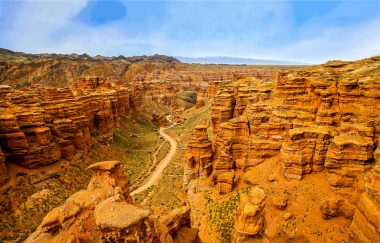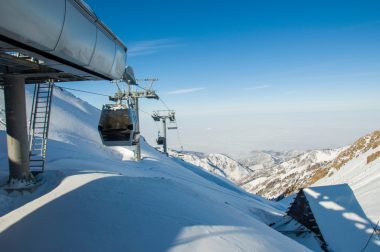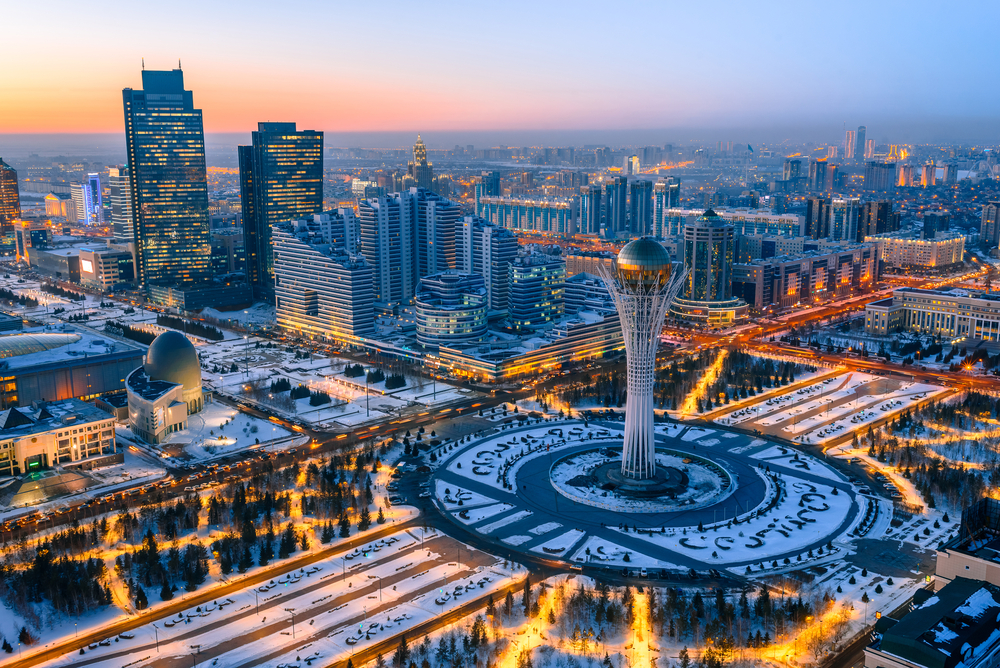When in 2006 the US mockumentary “Borat – Cultural Learning from America to Make Benefit for the Glorious Nation of Kazakhstan” by the British comedian and actor Sacha Noam Baron Cohen celebrated international cinema successes, the Kazakh Foreign Ministry initially threatened to sue for the obvious, albeit clearly satirically exaggerated degradation of the world’s largest landlocked country with an area of over 2.7 million km².
However, the government of the sparsely populated Central Asian country with only 18.3 million inhabitants quickly recognized the immense advertising potential of the film character for its own tourism and after the number of tourist visas applied for by foreign guests had increased tenfold in a very short time after the cinema release of “Borat”, they even thanked its actor for the unexpected help.
State subsidies to significantly expand tourism in the future

In fact, tourism has evolved from a niche to a significant economic factor in Kazakhstan over the past two decades. In 2000, for example, less than 1.5 million visitors came to the country, in 2012 there were already over 4.8 million, and in 2016 there were already a good 6.5 million guests. In 2014, the Kazakh cabinet adopted the so-called “Tourism Industry Development Plan 2020” with an investment volume of 4 billion US dollars for the extensive expansion of tourism infrastructure and the creation of about 300,000 new jobs in the industry. In the course of this, the visa requirements for entry were also significantly simplified in the same year, so that EU citizens and German citizens now only need a passport, but no longer a visa for their stay in Kazakhstan of up to 30 days.
An English prince has helped an old Soviet ski resort to new glory

Experts and connoisseurs unanimously welcomed this initiative of the Kazakh government as a long overdue step in the right direction to finally bring the country, which is so interesting in terms of landscape and culture, a little closer to the international public. Kazakhstan also gained a certain fame through the skiing holiday that the member of the English royal family Prince Harry spent there in the winter of 2014 with his now former girlfriend Cressida Bonas. The traditional winter sports resort of Shymbulak, a good 25 kilometers south of the city of Almaty in the far southeast of the country, was already the venue for various ski competitions and training camps of the Olympic team when it belonged to the USSR. As part of the above-mentioned tourism plan, Shymbulak is to be increasingly promoted as a destination for wealthy winter vacationers from countries such as China and India in the future.
Almaty – The historic city on the Silk Road
This project seems to make quite sense due to the proximity to the venerable Kazakh capital Almaty, which is the largest and former Kazakh capital with over 1.8 million. According to archaeological finds, today’s almost 700 km² urban area was permanently settled over 2,000 years ago. Almaty was also known in Europe until the 16th century due to its geographical location on the legendary Silk Road, in the “City of Apples or Apple Trees”, which has been renamed since 1993, there are still many buildings and museums worth seeing as well as sacred buildings and theaters. These include the 371-metre-high television tower built in 1983 on the 1,130-metre-high local mountain Kök-Töbe, the Ascension Cathedral from 1907 and the St. Nicholas Cathedral from 1908. Guests of the city also like to visit the “Central State Museum of the Republic of Kazakhstan” with over 300,000 exhibits, the “State Museum of the Arts” founded in 1979 with 22,000 works of art, and the “Museum of Folk Music Instruments”, which reopened in 2013 with currently over 1,200 instruments from Kazakhstan and around 40 other countries.
The huge rocky gorge is made for rapid rides on the long river
In the surrounding, 224,000 km² province of Almaty, there is also a lot to see and discover for visitors to Kazakhstan who are interested in nature and culture. The official administrative seat of Taldyqorghan currently has a good 145,000 inhabitants, and the local history museum and the neighboring Shansgurov Museum are frequently visited here. The rock carvings in Tamgaly, which are up to over 4,500 years old, have been a UNESCO World Heritage Site since 2004. The small border town of Dostyk can be used for travel to China. The mountains around the town of Talghar, which are up to over 3,000 metres high, are popular among hikers. Architecturally more strongly influenced by Chinese than Russian or Kazakh, the mosque in the city of Sharkent is built between 1887 and 1892. The most famous natural monument in the Almaty region is the almost 90-kilometre-long “Charyn Canyon”, which is often compared to the US “Grand Canyon” because of its appearance and has also been increasingly used for whitewater rafting with rubber dinghies in recent years.
Where the legendary warlord Genghis Khan had his meal cooked
The rough and rugged rocky gorge, which glows red in the sun, is also part of the 127,000-hectare national park named after it. There are currently a total of 13 national parks in Kaschhastan, of which the areas of Altyn-Emel, Chonghar-Alatau, Ile-Alatau, Kolsai Lakes, Sairam-Ugam and Tarbaghatai are equally located in the southwest of the country. In the north, on the other hand, there are the national parks of Bajanaul, Bujratau and Burabai as well as Kökschetau and Qarqaraly, and in the far east is the country’s largest national park, Katon-Karagai, with an area of almost 644,000 hectares. Well-known attractions in the Altyn-Emel National Park are the so-called red and white mountains Aktau and Katutau as well as a historic cooking place of the mythically glorified former Mongol leader Genghis Khan. In the Bajanaul National Park there are three lakes that are much visited in the summer months, north of the Dschongghar-Alatau National Park the 2,650 km² Alaköl Lake, which is designated as a bird sanctuary. In the 112,000-hectare Qarqaraly National Park in central Kazakhstan, the two lakes Baceen and Shaitankol are popular destinations for locals.


